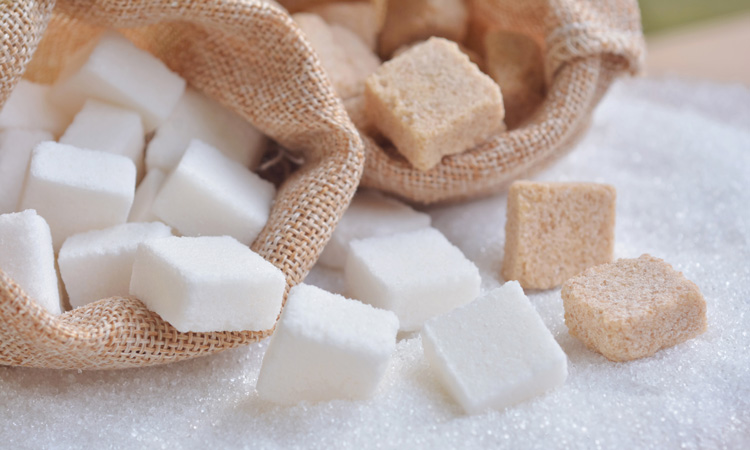Innovating with sweeteners and sugar alternatives
- Like
- Digg
- Del
- Tumblr
- VKontakte
- Buffer
- Love This
- Odnoklassniki
- Meneame
- Blogger
- Amazon
- Yahoo Mail
- Gmail
- AOL
- Newsvine
- HackerNews
- Evernote
- MySpace
- Mail.ru
- Viadeo
- Line
- Comments
- Yummly
- SMS
- Viber
- Telegram
- Subscribe
- Skype
- Facebook Messenger
- Kakao
- LiveJournal
- Yammer
- Edgar
- Fintel
- Mix
- Instapaper
- Copy Link
Posted: 9 January 2020 | Jaclyn Bowen | No comments yet
In an era that is waging war on sugar, a range of companies have started to experiment with sugar alternatives. Jaclyn Bowen explores.


When it comes to reducing added sugar in confectionery products, Public Health England (PHE) published an ‘Achieving the 20 percent sugar reduction’ report.5 The R&D onus is on brands to reduce the sugar content of their confectionery product portfolio by 20 percent by 2020. The categories required to implement changes include breakfast cereals, yoghurts, biscuits, cakes, morning goods (such as croissants), puddings, ice creams (including lollipops and sorbets), confectionery (chocolate and sweets) and sweet spreads (including sub categories of chocolate spread, peanut butter, fruit spreads and dessert toppings and sauces).
While the CDC and other government agencies are poised to focus on education, advocacy, awareness and policy changes in an effort to combat the obesity, diabetes and sugar consumption epidemic, the use of sweeteners continues and in some categories is accelerating.
Whether due to consumer avoidance of sugar or changes in federal policy to reduce added sugars, there have been some interesting sweetener trends and innovations.
Formulation tips for manufacturers:
1. Consider alternatives to traditional sugar: Honey provides sweetness as well as other benefits including antioxidants and antimicrobial properties. Be sure to put supplier assurance protections in place to ensure authenticity. Finished product testing is best practice. Remember, just because honey is not traditional sugar, it is still a sweetener and is therefore calorie dense.
2. Governments are using sugar taxes as a means of curbing sugar consumption: According to the World Health Organization,13 taxation on sugary drinks is an effective intervention to reduce sugar consumption. Evidence shows that a tax on sugary drinks that rises prices by 20 percent can lead to a reduction in consumption of approximately 20 percent, thus preventing obesity and diabetes. I believe it is only a matter of time before this tactic is applied to cakes, cookies, ice cream and candy. I suggest monitoring the evolving state and federal policies in anticipation of policy changes that could affect your brand. Better yet, be proactive in improving public health and start making changes now.
3. Keep an eye on evolving food safety regulations around acrylamide: According to the FDA,14 acrylamide is a chemical that can form in some foods during high-temperature cooking processes, such as frying, roasting and baking. It affects products such as cookies, cakes and toast when they undergo a process called the ‘Maillard reaction’ during the browning process. According to the American Cancer Society,15 the International Agency for Research on Cancer (IARC) classifies acrylamide as a “probable human carcinogen”, the US National Toxicology Program (NTP) has classified acrylamide as “reasonably anticipated to be a human carcinogen”, and the US Environmental Protection Agency (EPA) classifies acrylamide as “likely to be carcinogenic to humans”. To date, the FDA has initiated several activities since the discovery of acrylamide in food in 2002, including toxicology research, analytical methodology development, food surveys, exposure assessments, formation and mitigation research and guidance for industry. Meanwhile, the European Union Commission16 has established mitigation measures and benchmark levels for the reduction of acrylamide in food. Concerned about acrylamide levels in your products? Have them tested.
Honey
According to a 2019 study by Reuters,6 over the next five years the organic honey market will register a 10.4 percent CAGR in terms of revenue. A May 2019 study by Global Industry Analysts, Inc.7 highlighted that the antimicrobial, antibacterial and antioxidative properties coupled with rising consumer preference for natural and healthy alternatives to sugar is what is driving global consumption of honey.
To live healthier, longer lives, the CDC says that Americans need to be more active and ‘eat better’, which includes consuming fewer calories from added sugars
The study highlights that scientific validation of the medicinal uses of honey, its growing popularity as a premium ingredient, and the spread of cancer and resulting consumer demand for antioxidant-rich foods is giving honey a unique value proposition compared to its manufactured-sweetener counterparts. A recent study by Clean Label Project,8 which tested the top-selling sweeteners, noted honey to be among the top sweeteners for antioxidant activity.
Honey not only sweetens foods naturally, but also gives bakers a ‘clean label’ alternative to other sweeteners. Honey is also effective in enhancing the flavours of other ingredients; naturally occurring organic acids in honey, such as gluconic acid, enhance the flavours of spices, fruits and nuts. When used with herbs, spices such as cinnamon, and other flavours, honey helps to enhance their taste and aromas. In bakery foods, honey performs many roles beyond sweetening bakery foods: products that contain honey dry out more slowly and have a lesser tendency to crack due to honey’s hygroscopicity. The acid content of honey can also help to inhibit mold growth in bakery foods and extend shelf life.
Honey fraud
The growth of honey is not, however, without limitations: Global Industry Analysts Inc.7 highlighted the rising incidence of food fraud and illegal “honey laundering.” According to the US Pharmacopeia’s Food Fraud Database,9 honey is now the third-favourite food target for adulteration, behind milk and olive oil. Not forgetting that almost seven years ago, the food industry experienced the largest food fraud case in history – and it related to honey. According to the US Department of Justice,10 five individuals and two domestic honey processing companies were charged with federal crimes in connection with a nationwide investigation of illegal importations of honey from China that were mislabelled as coming from other countries to avoid antidumping duties, or adulterated with antibiotics not approved for use in honey. Altogether, the seven defendants allegedly avoided antidumping duties totalling more than $180 million.
Honey not only sweetens foods naturally, but also gives bakers a ‘clean label’ alternative to other sweeteners
While the risk of adulterated honey is high, brands can and should take precautions. Rather than relying solely on Certificates of Analysis, it is wise to consider carrying out random sampling and finished product testing to confirm authenticity and source verification of honey-based ingredients.
Sugar substitutes
According to Reuters,11 the low-calorie sweeteners market is estimated to grow at a CAGR of 3.8 percent until 2023, fuelled by rising consumer health concerns around sugar. Natural high intensity sweeteners (NHIS), such as Stevia, are commonly used in beverages and food applications, but formulating confectionery products with sugar substitutes is not without challenges.
According to PreScouter,12 a Northwestern University concept that connects corporate research and development labs to research coming from academia, natural high-intensity sweeteners tend to exert a high degree of bitterness, which poses severe challenges, mainly in solid and confectionery products rather than beverages. This is due to their high solubility rates in liquid products, providing a uniform distribution on the taste buds of consumers. Consequently, industries are trying to counteract the bitter aftertaste of NHIS in non-liquid goods to satisfy customers’ formulation needs.
Industries are actively working towards innovative technologies to develop less sugary products with similar texture and sweetness, while delivering on evolving consumer and regulatory expectations.
References
To view references, please click here.
About the author
Jaclyn Bowen is the Executive Director of Clean Label Project and a food safety and quality systems engineer. Prior to coming to Clean Label Project, she spent 15 years at the World Health Organization Collaborating Centre, NSF International, working on the creation and enforcement of food safety and water quality standards and compliance systems.








